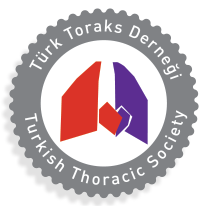Abstract
Objectives:
Bronchiolitis caused by respiratory viruses is the most common cause of hospitalization for children under one year of age. Although several medications and interventions have been studied for the treatment of bronchiolitis, maintenance of hydration and oxygenation is the main treatment. High flow nasal cannula oxygen(HFNC-O2) has been widely used as respiratory support in acute respiratory diseases in children. The aim of our study was to compare the effectiveness of HFNC-O2 with oxygen treatment with simple face mask(SFM) in patients with moderate and severe bronchiolitis.
Methods:
We included children(1-24 months) with moderate to severe bronchiloitis,SO2<92%, bronchiolitis severity scoring(BSS) who applied to Ege University Children’s Hospital between March 2017-February 2019. Patients who need urgent respiratory support and intensive care admission, with a diagnosis of cyanotic heart disease, upper airway obstruction, craniofacial anomaly, chronic lung disease, cerebral palsy, tracheostomy were excluded. The patients were randomly divided into two groups: HFNC-O2(study group) and SFM(control group) with oxygen therapy.
Results:
A total of 45 patients were included in our study. Twenty-six patients were randomly assigned to the control group and 19 of them to the study group. There were no significant differences in terms of age, gender, weight, gestational age and number of attacks (p>0.05). No significant difference was found between the parameters of HR, RR, SO2, BSS and blood gas measured at the time of application. RSV A/B in taken respiratory viral PCR was found to be more statistically frequent in virus study group (p<0.05). In the study group, there was a statistically significant decrease in HR at the 4th and 12th hours, whereas in this group HR reached normal values according to earlier age (p<0.05). There was no statistically significant difference between the groups in terms of the need for additional respiratory support during the 4th hour and the duration of hospitalization, which was our primary aim. No statistically significant difference was found between the two groups in terms of RR, SO2, BSS, oxygen demand duration and the duration of hospitalization.
Conclusion:
In patients with moderate and severe bronchiolitis, HFNC-O2 treatment did not significantly reduce respiratory effort, oxygenation and BSS. Tachycardia secondary to respiratory distress was significantly reduced at 4 hours with HFNC-O2 treatment and HR was found to fall to normal range earlier in terms of age. We believe that in our study, HFNC-O2 treatment will show its efficacy according to standard SFM.



